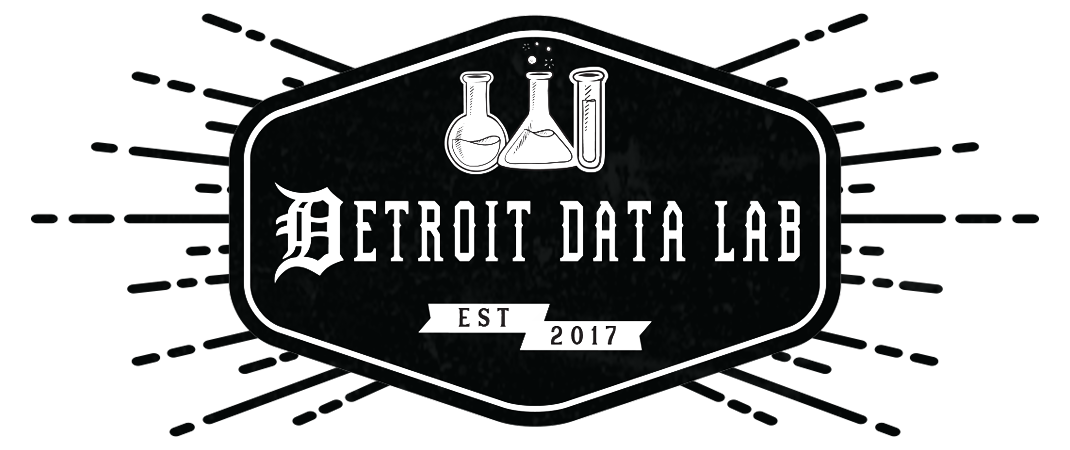In the remaining sections of this chapter, we go further with matrices, finally getting into transpose and inverse, homogeneous versus non-homogeneous systems, and solutions to these systems.
A quick reminder this is the R companion series to the book Linear Algebra: Step by Step, by Kuldeep Singh. As the series progresses, I’m sure you’ll see the benefits of this particular book in its approach to building to more complex ideas. To transfer pure mathematical skills to R, it’s important to follow these same building blocks along the way. In an effort to help cover the basic costs of the website, the link above goes to the Amazon product page. As an Amazon Associate I earn from qualifying purchases.
Many of you have written encouraging notes about the small amount we’ve covered so far, which I’m extremely grateful for. Comments or questions can be sent to feedback@detroitdatalab.com as this series goes on. I’m happy to edit or update blog posts, and even add supplemental ones.
Section 1.6 – The Transpose and Inverse of a Matrix
To transpose a matrix, you can use the function t from the base R package. Example 1.29 part (i) is shown below
A <- matrix(c(-9,2,3,7,-2,9,6,-1,5), nrow = 3, byrow = TRUE)
t(A)
An identity matrix can be created with diag. We’ll use diag more later, but for now, its basic usage works great here. The I4 matrix then is below.
A <- diag(4)
A
For the inverse of a matrix, we go back to the matlib package and use the Inverse function (note the capital “I” in the function). For example 1.33, we can show B is the inverse of A with this code snippet.
A <- matrix(c(1,2,0,2,5,-1,4,10,-1), nrow = 3, byrow = TRUE)
Inverse(A)
Section 1.7 – Types of Solutions
If a system of equations has no solution, we consider it to be inconsistent. To reproduce example 1.36, we can perform the Gaussian elimination by using matlib once more. Our result shows the same 0,0,0,5 in the last row, proving the system is inconsistent.
A <- matrix(c(1,1,2,-1,3,-5,2,-2,7), nrow = 3, byrow = TRUE)
b <- c(3,7,1)
gaussianElimination(A,b)
Let’s also explore example 1.37 for the simplest method of solving a homogeneous equation.
A <- matrix(c(-1,2,3,1,-4,-13,-3,5,4), nrow = 3, byrow = TRUE)
b <- c(0,0,0)
gaussianElimination(A,b)
The interpret the above code’s output in line with the example, it’s important to understand what the result of a Gaussian elimination means. In this example, the top row is 1,0,7 and the second row is 0,1,5. Since our variables are x,y,z this means x+7z = 0, so we can understand that x = -7z. Similarly, we can see y+5z = 0, so y = -5z.
For a non-homogeneous system, the steps are very similar. Only your vector b will change. Try solving example 1.38 using the same steps and interpretation method.
Section 1.8 – The Inverse Matrix Method
To find the inverse of a matrix, I prefer matlib to pracma, because pracma is meant to emulate matlab’s methods.
Example 1.41 companion code is below.
A <- matrix(c(1,0,2,2,-1,3,4,1,8), nrow = 3, byrow = TRUE)
Inverse(A)
See how much easier this can be with R?
Example 1.42 part A puts inverse to use along with matrix multiplication syntax we learned before.
A <- matrix(c(1,0,2,2,-1,3,4,1,8), nrow = 3, byrow = TRUE)
b <- c(5,7,10)
invA <- Inverse(A)
invA %*% b
When a matrix is non-invertible, the error message from Inverse will tell you that the matrix is numerically singular.
Chapter 1 Summary
The packages we introduced in chapter 1 were matlib, pracma, and expm, along with some base functions within R.
At this point, you should be able to understand and use R to create a matrix from a system of linear equations, perform operations such as Gaussian elimination and interpret their results, perform matrix arithmetic and algebra, determine the transpose and inverse, and use these to identify solutions to systems where they exist.
Chapter 2 will be presented in the next blog post as an entire unit, covering topics in Euclidean Space.
